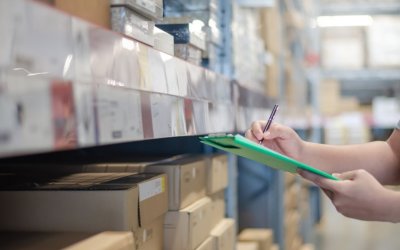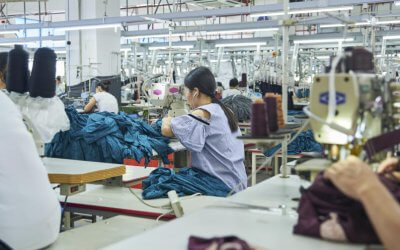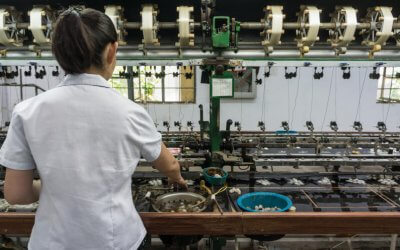Do you have a new product design that you want to manufacture and get onto store shelves ASAP?
It is important to be realistic about timelines.
At Insight, we do a lot of sourcing in Asia and sometimes would-be importers will come to us with a design and expect that they can have products shipped to them within a month. This type of timeline is — as any experienced importer will tell you — a fantasy.
So how long does it take to go from a completed prototype or CAD design to a product that is sitting on store shelves?
It depends on different factors, but here we present a general timeline which includes the various steps involved as well as how long they typically take.
Your Timeline: CAD Drawing to Store Shelves
Assuming that you have your design ready as a CAD file, it is now time to look for the right manufacturer. This means you need to vet some different factories that might potentially meet your needs.
Step 1: Initial Vetting of Factories (6-8 weeks)
At Insight, we generally allow for up to two months for factory vetting.

It is important to establish clear criteria so that you can find the right manufacturers.
First, we work with our clients to establish their criteria. What countries are they willing to source from? Do they have specific requirements for social compliance or environmental compliance?
With their criteria well defined, it then takes a couple of weeks to research different factories, ask them questions, and have a back-and-forth dialog to determine their suitability. We do a desktop review of their capabilities and check their licenses and any other important documentation.
From here we narrow it down to the top two or three manufacturers that seem to be the best fit.
It is then time to conduct one or more factory audits, which means we send an auditor to the manufacturing facilities for on-site verification of their capacity and capabilities. We may audit just the top factory pick or we may audit the top three.
Then it is time for quoting.
Step 2: Quoting (1-2 weeks)
Once we have verified that these factories have the necessary capabilities and are a good fit, we nail down their final quotes.
During the initial vetting, we may have sought more general pricing information, but now we will provide them with the CAD file or prototype along with detailed specifications. These specifications should always contain as much information as possible about the required measurements, components, materials, colors, printing details, and any other relevant product information.
It is important to make sure the specifications are as detailed as possible so that you do not give the factory any wiggle room to make unexpected substitutions or modifications down the road.
Unclear specifications can lead to the phenomenon of quality fade, which is common in low-cost countries.
Once we have received these quotes, it is time to make a decision and ask for samples.
Step 3: Sampling (3-6 weeks)
Your top-choice factory has now shown that they have the capacity and capabilities to meet your needs, so we request 3 to 10 samples.

You’ll need a “golden sample,” which is a sample that matches your specifications perfectly.
It might take a week or two for them to make your samples and then they will be shipped, which generally takes 2 or 3 days.
At Insight, we collect these samples for our customers and inspect them, checking to ensure that they meet all requirements. Samples are not always perfect on the first go.
Together with the customer we will make comments on these samples, send them back to the factory, and then wait for the next round.
This continues until you approve the final samples, which will serve as your golden samples, which you can then compare to all future production units.
Now it is time to start production.
Step 4: Production, Testing, and Inspection (30-45 days minimum)
Depending on your order size and your product’s complexity, lead times will vary. Larger orders and more complex products will generally require more time to produce.
Also, you should make time for lab testing during production. Send some of your completed products to an accredited lab to ensure that they are in line with regulatory requirements in the country of importation.
This takes around 2 weeks, and it is important that you send an actual production unit and not one of your samples. This is because they are produced using different manufacturing methods than the samples.
At the end of production, you should also conduct pre-shipment inspections. Plan to do this 7 to 10 days before your ship date.
Step 5: Shipping by Ocean Freight (30 days)
If you are in the US, you should generally plan for a shipping time of around 30 days.
Shipping into Long Beach from China might take as few as 20 days, but depending on where you are shipping from in Asia, and where you are shipping to in your own country, there will be adjustments to the timeline.
Also, keep in mind that products may take time to get through customs, so include a buffer in your schedule. In order to avoid customs delays, you’ll want to be sure to have all documentation in order and give your products the correct tariff classifications.
After clearing customs, your products will then need to go to your retailers’ distribution centers, which takes additional time.
So what can we learn from all this?
It’s Often Reasonable to Plan For Around 6 Months
It makes sense to allow for around 6 months from the time you start the process to the time it gets to your retailers’ distribution centers and onto shelves.
That means that if you want to ship for the holiday season, for example, you should generally start the process by around the very beginning of the year.
If you are planning to work with a new factory and want to learn more about how to assess their capabilities, we recommend downloading the following guide.
Free Guide
How to Prepare for a Factory Audit
A factory audit helps you assess a supplier's systems, capacity, workplace environment, or capabilities to ensure they meet your requirements as a buyer.
But which type of audit should you conduct, and which points should you cover on your checklist? In this free guide, you'll learn how to run an effective supplier assessment.





I have my own pepper sauce
invented, website created,spoke with many co-packers and all they want is tons of money without the process of retailing my product, would you have any info available for a all in one manufacture,marketing and retailing
Great information, thank you!
Glad it was helpful, Claire!